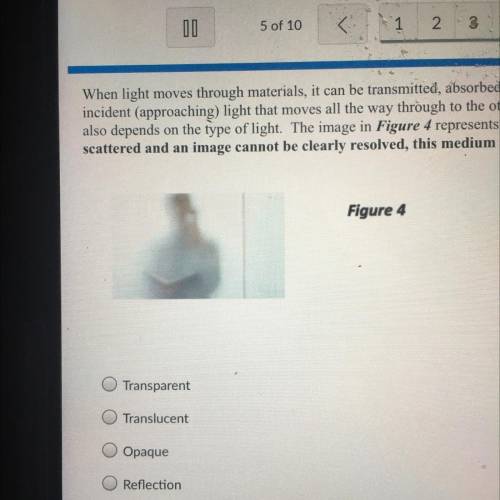
Biology, 07.12.2020 20:00 tiffany1711
When light moves through materials, it can be transmitted, absorbed, or reflected. The transmittance of a material is the proportion of the
incident approaching) light that moves all the way through to the other side. The transmittance of a material depends on its thickness, but it
also depends on the type of light. The image in Figure 4 represents visible light transmitting through a certain medium. Because the light is
scattered and an image cannot be clearly resolved, this medium is described as being


Answers: 3


Other questions on the subject: Biology


Biology, 21.06.2019 15:30, kashaallen492
Compare and contrast the adaptations of free-living flatworms and parasitic flatworms
Answers: 1

You know the right answer?
When light moves through materials, it can be transmitted, absorbed, or reflected. The transmittance...
Questions in other subjects:




History, 08.04.2020 16:20

Mathematics, 08.04.2020 16:20

Social Studies, 08.04.2020 16:20


History, 08.04.2020 16:20


English, 08.04.2020 16:20



